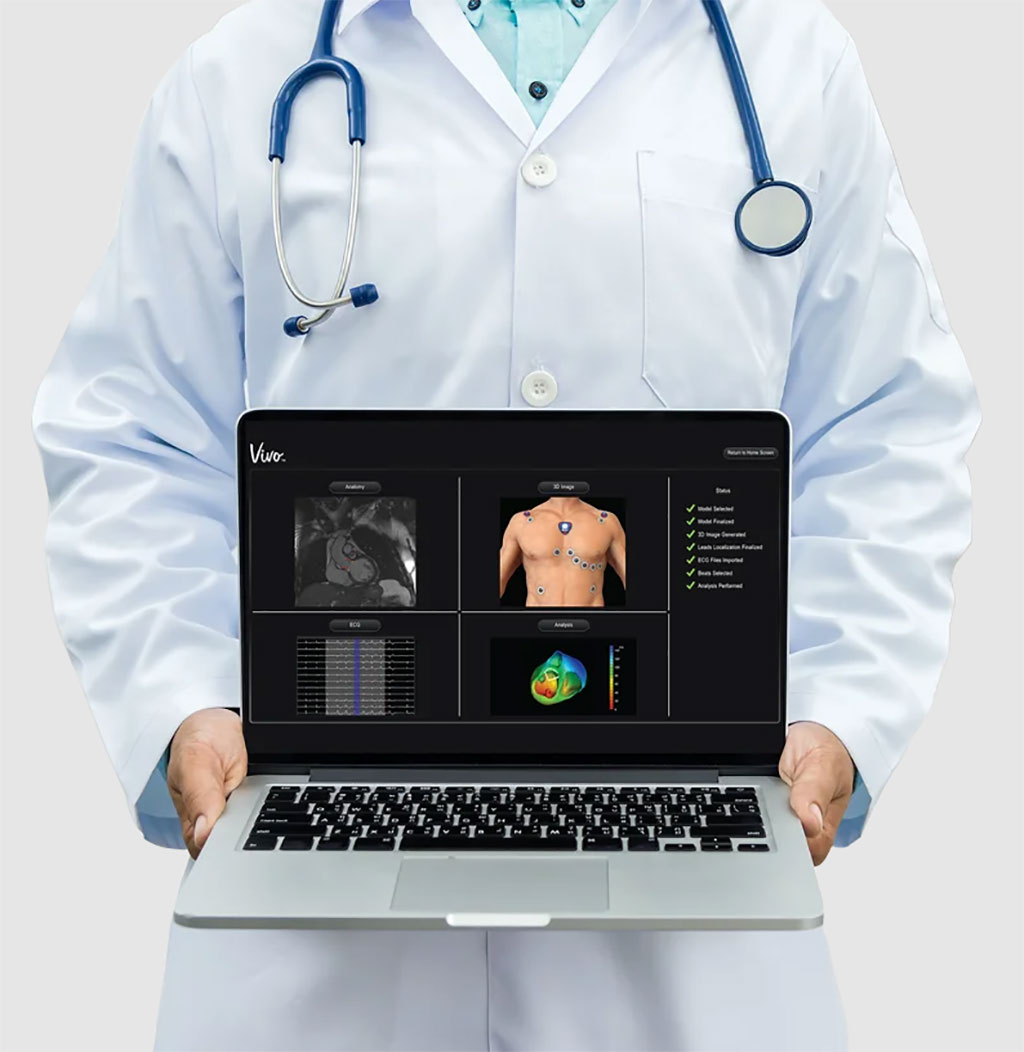Non-Invasive 3D Imaging System Enables Physicians to Identify Origin of Arrhythmias Pre-Procedure
Posted on 02 Dec 2022
Conventional invasive mapping for identifying the origin of arrhythmias pre-procedure is both time-consuming for localization and often unsuccessful. Now, a novel localization device is setting a new standard for planning of ventricular ablation procedures by enabling physicians to noninvasively identify an area of ventricular arrhythmia onset.
VIVO from Catheter Precision (Mt. Olive, NJ, USA) is a non-invasive 3D imaging system that enables physicians to identify the origin of arrhythmias pre-procedure, streamlining workflow and reducing overall procedure time. VIVO requires acquisition of a MRI or CT image, a standard 12 lead electrocardiogram (ECG) and a 3D photograph of the patient’s torso with the ECG leads in place. These data are used to create patient specific heart and torso models and to identify precise electrode placement of the 12 lead ECG. Once these data are combined, VIVO uses mathematical algorithms to identify the arrhythmia location on a 3D map of the heart, shown in red. The localization, obtained prior to the procedure, can be used in pre-procedure planning.

The VIVO system is comprised of three pieces of equipment and includes hardware (one time purchase) and a single use disposable component. The VIVO software comes loaded on a laptop PC and includes the 3D camera and required accessories, such as a USB cable. Positioning patches are placed on the patient’s torso to aid in positioning the camera for optimal 3D photograph outcomes. So far, the VIVO system has been used in more than 800 procedures in leading U.S. and European hospitals.
“We are always looking to the next milestone in clinical usage of our VIVO System and reaching 800 procedures by the end of 2022 was a goal we set earlier this year,” said David Jenkins, Catheter Precision CEO. “We are gratified by physician adoption so far through our strategic limited launch and look forward to expanding usage in 2023 by growing our sales and clinical support teams to access additional hospitals in new and existing territories.”
Related Links:
Catheter Precision














